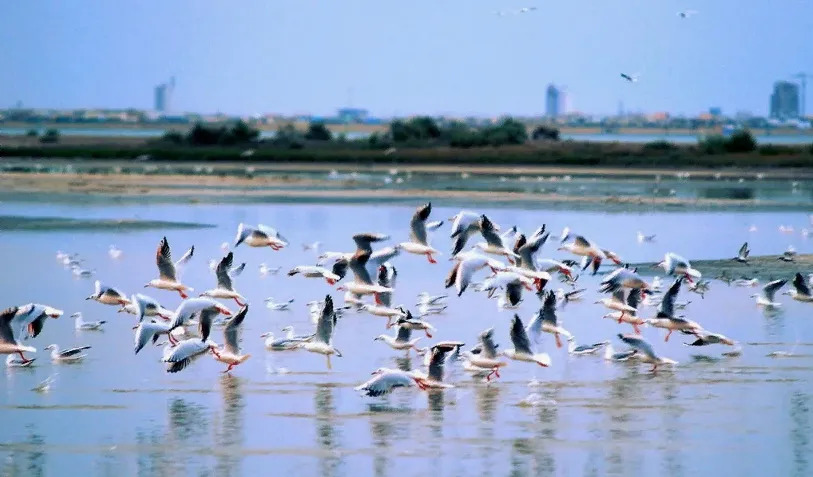On the eve of World Wetlands Day, an international ornithological expedition was conducted in Turkmenistan. The purpose of the expedition was to monitor the populations of wintering birds in the Turkmen sector of the Caspian Sea. The expedition was supported by the Ramsar Convention under the motto “Wetlands and human well-being”.
The expedition included members of the Ramsar Regional Initiative of Central Asia (RRI-CA), researchers of the Khazar Reserve, scientists and experts from the Ministry of Environmental Protection of Turkmenistan, the National Institute of Deserts and Flora, the S.A.Niyazov Turkmen Agricultural University, the Caspian Environmental Control Service, the Technology Center of the Academy of Sciences, editors, journalists and TV presenters of the relevant print and electronic media.
During the expedition, a large-scale ornithogeographic survey was carried out to clarify the changing coastline due to a drop in sea level. In addition to this, experts carried out an annual accounting of birds inhabiting this region.
In seven days of work, the expedition, led by the RRI-CA member, Doctor of Biological Sciences, Professor Eldar Rustamov, overcame 1,545 kilometers off-road in difficult weather conditions to survey the coastal zone.
The preliminary results of the expedition were discussed in the format of a round table in the office of the Khazar State Nature Reserve, held as part of the World Wetlands Day. The main points are presented below:
- The favorite places of bird wintering have decreased in size, and in some places have dried up – bays and estuaries in the Mikhailovsky, Severo-Chelekensky and Yuzhno-Chelekensky bays. At the same time, the process of recreating the former places favorable for wintering in the bays of Karshi, Aim and other tracts is underway.
- Many new islands have appeared, especially in the area of the Yuzhno-Chelekenskaya Spit and Ogurdzhali Island. These islands can become a refuge for wintering, nesting and passing birds.
- More than 200 thousand birds of dozens of wetland species have been recorded. Flamingos set a kind of record this year – about 30 thousand of them were counted.
According to Turkmen experts, such water bodies of the country as Turkmen aylagi, Altyn asyr, Ulyshor (Kattashor) – Yeraji, Kyzylburun-Soltandag, Kelif-Zeit, Ekerem-Esenguly, Mollakurban, Khankhovuz, Saryazy, Sarykamysh, Soltansanjar-Dueboyun, lake “Altyn Kel” can claim recognition as “Ramsar territories”.
Brief reference
It should be noted that the Regional Environmental Centre for Central Asia (CAREC) contributes to the implementation of the Ramsar Convention. With the support of GIZ and the Ramsar Convention Secretariat, CAREC supports the Ramsar Regional Initiative of Central Asia (RRI-CA). The RRI-CA’s objectives:
- Support for the implementation of the Strategic Plan of the Ramsar Convention in Central Asia;
- Promoting the effective conservation and sustainable use of existing and potential Ramsar wetlands in the region;
- Raising awareness of the importance of wetland ecosystems;
- Inclusion of wetlands issues in the programs of national and regional nature protection activities;
- Ensuring the transfer of knowledge and experience in Central Asia and other regions of the world.
Source: turkmenportal.com
Additional information: Ludmila Kiktenko – Programme Manage, Environmental Management Programme, CAREC, lkiktenko@carececo.org

